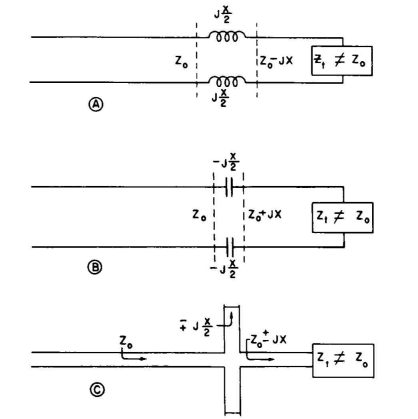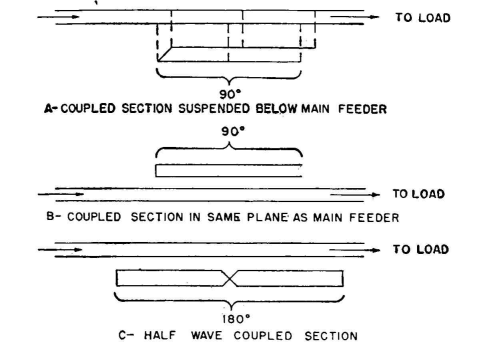| Radio Antenna Engineering is a free introductory textbook on radio antennas and their applications. See the editorial for more information.... |

|

Home  Radio-frequency Transmission Lines Radio-frequency Transmission Lines  Impedance-matching Techniques Impedance-matching Techniques  Termination by Means of Coupled Sections Termination by Means of Coupled Sections |
||||||






|
||||||
|
Termination by Means of Coupled SectionsAuthor: Edmund A. Laport
Standing waves on a feeder can be suppressed by means of an open-end quarter-wave section or a half-wave short-circuited section coupled to the feeder (
The open end of the quarter-wave coupled section is pointed toward the load end of the feeder, and the standing waves are eliminated on the feeder opposite the closed end of the coupled section. The schematic diagram of this arrangement is given in Fig. 4.41.
|
||||||
Home  Radio-frequency Transmission Lines Radio-frequency Transmission Lines  Impedance-matching Techniques Impedance-matching Techniques  Termination by Means of Coupled Sections Termination by Means of Coupled Sections |
||||||
Last Update: 2011-03-19



